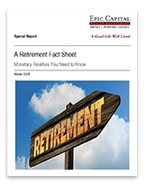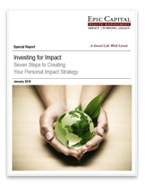Your Diversified Portfolio vs. the S&P 500
Sep 16, 2019
“Why is my portfolio underperforming the market?”
This question may be on your mind. It is a question that investors sometimes ask after stocks shatter records or return exceptionally well in a quarter.
The short answer is that even when Wall Street rallies, international markets and intermediate and long-term bonds may underperform and exert a drag on overall portfolio performance. A little elaboration will help explain things further.
A Diversified Portfolio Necessarily Includes a Range of Asset Classes.
This will always be the case, and while some investors may wish for an all-equities portfolio when stocks are surging, a 100% stock allocation is obviously fraught with risk.
Because the stock market has advanced so much over the past decade, some investors now have larger positions in equities than they originally planned, and that may leave them exposed to an uncomfortable degree of market risk. A portfolio held evenly in equities and fixed income ten years ago may now have a clear majority of its assets in equities, with the performance of stock markets influencing its return to a greater degree.
Yes, stock markets – not just here, but abroad. U.S. investors have more global exposure than they once did. International holdings represented about 5% of the typical investor’s portfolio back in the 1990s. Today, they account for around 15%. If overseas markets struggle, the impact on portfolio performance may be noticeable.
In addition, a sudden change in sector performance can have an impact. At one point in 2018, tech stocks accounted for 25% of the weight of the S&P 500. While the recent restructuring of S&P sectors lowered that by a few percentage points, portfolios can still be greatly affected when tech shares slide, as investors witnessed in late 2018.
The state of the fixed-income market can also potentially impact portfolio performance. Bond prices commonly fall when interest rates rise, which presents a short-term concern for an investor. If a bond is held to maturity, though, the investor will receive the promised principal and interest (assuming no default on the part of the issuer). Moreover, a rising interest rate environment may help the fixed-income segment of the portfolio’s long-term performance. New bonds issued in a rising interest rate environment have the potential to generate more yield than the older bonds of similar duration that they replace.
This Year, U.S. Stocks Have Done Well.
A portfolio 100% invested in the U.S. stock market in 2019 could have expected a year-to-date return approximating that of the S&P 500. But how many strategies invest entirely in US Stocks, without exposure to international and emerging markets?
Just as an illustration, assume that there actually is a hypothetical investor this year who is 100% invested in equities, as follows: 50% domestic, 35% developed foreign markets, and 15% emerging markets.
In this illustration, the S&P 500 will serve as the model for the U.S. market, MSCI’s EAFE index will stand in for developed foreign markets, and MSCI’s Emerging Markets index will represent the emerging markets. Through the end of July, the S&P was +18.89% year-to-date, the EAFE +10.31% YTD, and the Emerging Markets just +7.38% YTD. As foreign and domestic stocks have equal weight in this hypothetical portfolio, it is easy to see that its overall YTD gain would have been less than 18.9% as of the July 31 closing bell.
Your Portfolio is Not the Market – and Vice Versa.
Your investments may return less than the S&P 500 (or another benchmark) in a particular year due to various factors, including the behavior of the investment markets. Those markets are ever-changing. In some years, you may get a double-digit return. In other years, your return may be much smaller.
When your portfolio is diversified across asset classes, the highs may not be so high – but the lows may not be so low, either. If things turn volatile, diversification may help insulate you from some of the ups and downs that come with investing.
Tags: financial advisor, Investment Portfolio
More Insights
Few terms in personal finance are as important, or used as frequently, as “risk.” Nevertheless, few terms are as imprecisely defined. Generally, when financial advisors or the media talk about investment risk, their focus is on the historical price volatility of the asset or investment under discussion.
As Americans get their grills and beach chairs ready for the July 4th holiday, the stock market and the weather across much of the country have both been on heaters. Stocks and bonds continue to effectively navigate a complex policy landscape shaped by evolving trade dynamics, geopolitical tensions, and fiscal stimulus. The market’s resilience in … Continue reading “Market Update – America Gets Record High Stock Prices for Its Birthday”
Birthdays may seem less important as you grow older. They may not offer the impact of watershed moments such as getting a driver’s license at 16 and voting at 18. But beginning at age 50, there are several key birthdays that can affect your tax situation, health-care eligibility, and retirement benefits.
During times like these when geopolitical headlines can be unsettling for investors, we at LPL Research like to remind ourselves of one of our key investing principles. Markets have always faced challenges —ranging from geopolitical conflicts and economic downturns to natural disasters, political upheaval and health crises. These events often trigger short-term volatility and shake … Continue reading “Why Long Term Investing Beats Selling in Volatile Times”
Are you concerned about the inheritance taxes your heirs may have to pay? Then you may want to consider creating charitable lead trusts.
Services
Epic Capital provides the following comprehensive financial planning and investment management services: Learn More >


 Top of Page
Top of Page











